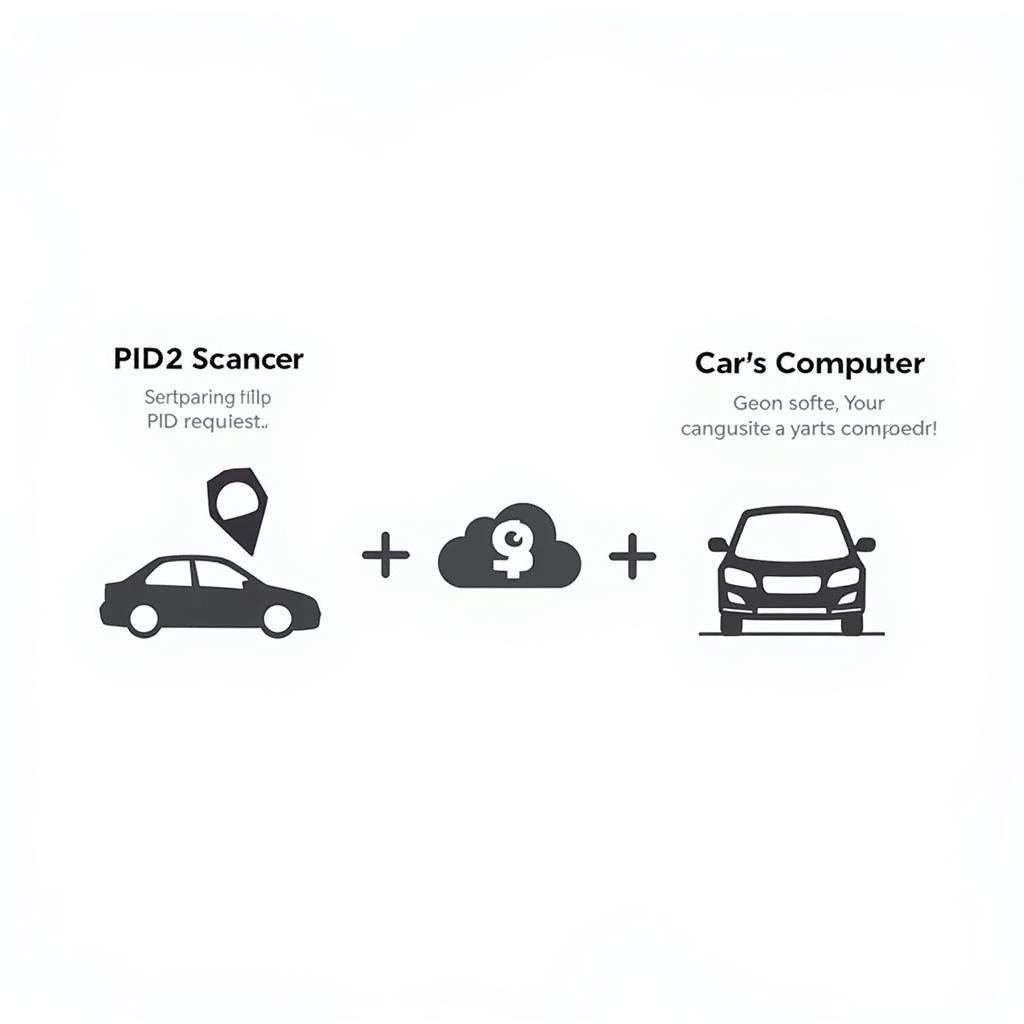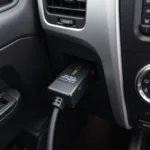OBD2 PIDs are codes used by your vehicle’s onboard computer to communicate with an OBD2 scanner. These codes, short for Parameter IDs, represent specific data points that your car tracks and stores. Think of them as unique identifiers for various engine and vehicle parameters, such as engine speed, coolant temperature, oxygen sensor readings, and much more.
By understanding what OBD2 PIDs are and how they work, car owners can gain valuable insights into their vehicle’s health, performance, and emissions. This knowledge can be empowering, enabling you to diagnose issues, monitor critical systems, and potentially save on costly repairs.
Decoding the Language of Your Car: Understanding OBD2 PIDs
Just like humans use languages to communicate, cars have their own language – a digital one spoken through OBD2 PIDs. Each PID is a specific request sent from the scanner to the car’s computer, asking for data about a particular parameter.
For example, if you want to know your engine’s current RPM, the OBD2 scanner would send the corresponding PID for engine speed. The car’s computer, in turn, would respond with the current RPM reading.
Think of it like asking your car a specific question: “What’s your engine speed right now?” and receiving a precise answer back.
Unveiling the Power of OBD2 PIDs: More Than Just Codes
OBD2 PIDs are more than just random codes; they hold the key to understanding the intricate workings of your vehicle. Here’s why they’re so crucial:
-
Real-Time Diagnostics: PIDs provide real-time data streams, allowing you to monitor various engine parameters while the engine is running. This can be invaluable for diagnosing intermittent problems or observing changes in performance under different driving conditions.
-
Troubleshooting and Repair: When your car throws a dashboard warning light, OBD2 PIDs help pinpoint the problem. By reading the diagnostic trouble codes (DTCs) and related PIDs, mechanics and DIY enthusiasts can identify faulty sensors, components, or systems.
-
Performance Monitoring: For car enthusiasts and performance tuners, OBD2 PIDs offer a window into the engine’s performance characteristics. Monitoring parameters like ignition timing, fuel trim, and air/fuel ratio can be instrumental in optimizing engine performance.
-
Emissions Control: With growing concerns about environmental impact, OBD2 PIDs play a vital role in monitoring emissions-related systems. PIDs track oxygen sensor data, catalytic converter efficiency, and evaporative emissions, ensuring your car meets environmental regulations.
Navigating the World of OBD2 PIDs: Standardization and Variations
While OBD2 standardization has brought significant progress, it’s important to note that not all PIDs are created equal. Here are some key points to keep in mind:
-
Standard PIDs (Mode $01): These are the most common PIDs, mandated for all OBD2-compliant vehicles. They cover essential engine and emissions-related parameters, providing a baseline for diagnostics.
-
Enhanced PIDs (Modes $02-$0A): Manufacturers often include additional, vehicle-specific PIDs beyond the standard set. These enhanced PIDs provide more in-depth data for specific systems, but they may vary between car makes and models.
-
PID Availability: Not all PIDs will be supported by every vehicle. The availability of specific PIDs depends on the car’s make, model, year, and the capabilities of the OBD2 scanner being used.
Unlocking the Secrets: Using an OBD2 Scanner to Access PIDs
Accessing OBD2 PIDs requires an OBD2 scanner, a handheld device that connects to your car’s OBD2 port. Once connected, the scanner acts as a translator, allowing you to read and interpret the data transmitted through the PIDs.
OBD2 scanners come in various forms, from basic code readers to advanced professional-grade tools. The type of scanner you choose depends on your needs and technical expertise. Basic scanners are sufficient for reading and clearing DTCs, while more advanced models offer real-time data streaming, graphing capabilities, and access to enhanced PIDs.
Conclusion
OBD2 PIDs are the unsung heroes of car diagnostics, providing a direct line of communication between your vehicle’s computer and the outside world. By understanding what OBD2 PIDs are, how they work, and the wealth of information they hold, you can empower yourself to take better care of your car, diagnose issues effectively, and make informed decisions about repairs and maintenance.
Whether you’re a car enthusiast seeking to optimize performance or a car owner wanting to stay ahead of potential problems, unlocking the secrets of OBD2 PIDs can be a game-changer in your automotive journey.
FAQs about OBD2 PIDs
1. Can I use any OBD2 scanner to access all PIDs?
Not all OBD2 scanners support all PIDs. While basic scanners can read standard PIDs (Mode $01), accessing enhanced PIDs (Modes $02-$0A) often requires more advanced scanners with manufacturer-specific capabilities.
2. Are there any risks associated with accessing OBD2 PIDs?
Accessing OBD2 PIDs using a reputable scanner is generally safe. However, attempting to modify or reprogram vehicle systems without proper knowledge and equipment can potentially cause damage.
3. Where can I find a list of OBD2 PIDs for my car?
OBD2 PID lists can be found online, in automotive repair manuals, or through manufacturer-specific resources. Keep in mind that PID availability may vary between car models and years.
4. Can I use OBD2 PIDs to improve my car’s fuel efficiency?
While OBD2 PIDs can provide insights into fuel consumption and engine performance, they don’t directly control fuel efficiency. However, monitoring parameters like oxygen sensor readings and fuel trim can help identify potential issues that may affect fuel economy.
5. Do I need to be a mechanic to understand OBD2 PIDs?
While a basic understanding of car mechanics is helpful, you don’t need to be a certified mechanic to grasp the fundamentals of OBD2 PIDs. Numerous online resources, forums, and guides can help you learn more about interpreting PID data.
Explore Further:
For personalized support and expert advice on OBD2 scanners and vehicle diagnostics, contact us via WhatsApp at +1(641)206-8880 or email us at [email protected]. Our dedicated team is available 24/7 to assist you.


